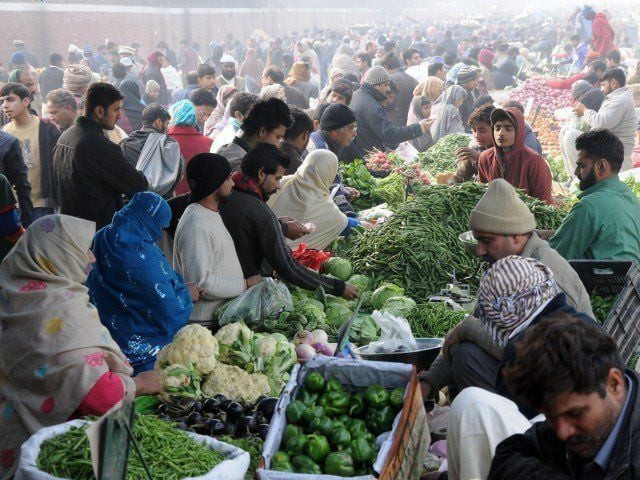Sasta bazaar turns into nightmare for shoppers
Inflation-stricken citizens complain of higher rates for vegetables, fruits

Sasta (cheap) Sunday Bazaar at the Rawalpindi Committee Chowk has become a costly place for visitors who have questioned the authorities for the ‘objective’ of declaring it a cheap place for shoppers.
A severe wave of inflation in terms of utility bills and open market shopping has already shattered the citizens’ nerves. Those who come to buy cheap essentials at the cheap bazaar are seen as angry overhearing the high prices. The buyers say the stall holders have fixed arbitrary rates for their profits, while the stall holders claim how to sell items cheaply while buying expensive goods.
Stall holders at the Sasta Bazaar are selling ginger for Rs800 per kg, garlic Rs600 per kg, onion Rs120 per kg, potato Rs100 per Kg, tomato Rs200 per kg, green chilli Rs150 per kg, bitter gourd Rs100 per kg, lemon Rs300 per kg, eggplant Rs100 per kg, and okra for Rs120 per kg.
Senior citizen Muhammad Junaid, who came to the bazaar for the grocery, was of the view that inflation was everywhere but “if I come to the cheap market for shopping, I find no difference in rates between the open and cheap markets.
Those, who are direct victims of the inflation, have become so helpless that they no longer have the power to protest.”
Shabbir Ahmed, another shopper, said that calling this market a cheap market was a complete lie. “Should we call it a cheap bazaar where the vendors are selling vegetables and fruits at their own rates. There is no price control system at all,” he opined.
Fruit rates were not low in the Sunday market. Plum is being sold at Rs250 per kg, peaches at Rs300 per kg, apricots at Rs250 per kg, mangoes at Rs150 to Rs200 per kg, and bananas at Rs200 per dozen.
“I visit this market only because it’s close to my house and buy vegetables and fruits together for a week or 10 days to avoid coming to the market every day. Otherwise, there is no difference in prices between this cheap market and the open market,” another citizen Malik Akhtar said.
The stall holders of the Committee Chowk Sunday Bazaar, where no list of official rates was found, claimed that the rates of vegetables and fruits, whose supply is more than the demand, were low, but were forced to sell items, already short or at higher rates in the major market, at higher rates.



















COMMENTS
Comments are moderated and generally will be posted if they are on-topic and not abusive.
For more information, please see our Comments FAQ